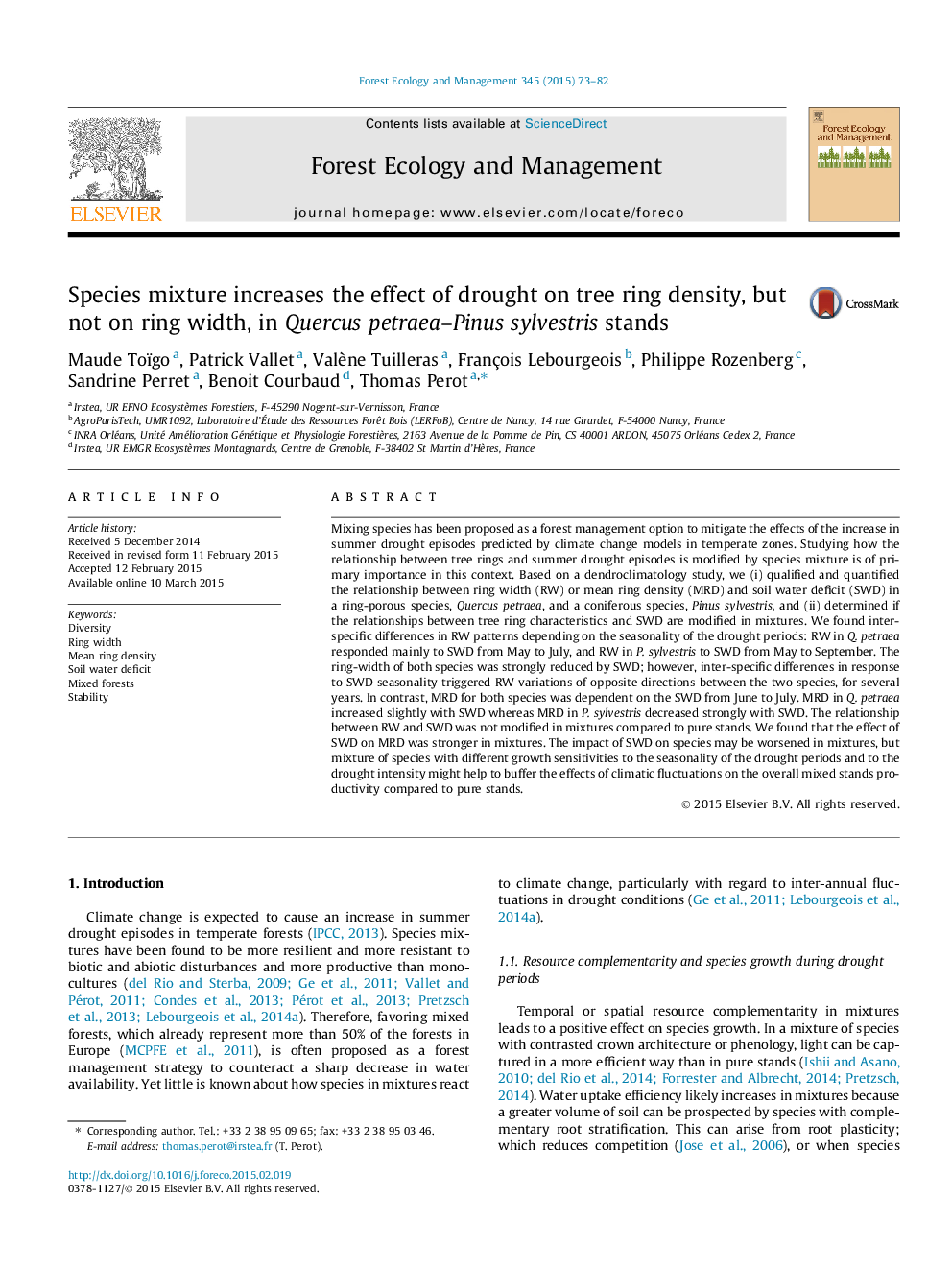| Article ID | Journal | Published Year | Pages | File Type |
|---|---|---|---|---|
| 86373 | Forest Ecology and Management | 2015 | 10 Pages |
•We studied drought and mixture effects on Quercus petraea and Pinus sylvestris rings.•For both species ring width was strongly reduced by soil water deficit (SWD).•Ring width depended on SWD from May to July for oak and May to September for pine.•The effect of soil water deficit on ring density was strong for pine but not for oak.•Mixture worsened the effect of soil water deficit on ring density for both species.
Mixing species has been proposed as a forest management option to mitigate the effects of the increase in summer drought episodes predicted by climate change models in temperate zones. Studying how the relationship between tree rings and summer drought episodes is modified by species mixture is of primary importance in this context. Based on a dendroclimatology study, we (i) qualified and quantified the relationship between ring width (RW) or mean ring density (MRD) and soil water deficit (SWD) in a ring-porous species, Quercus petraea, and a coniferous species, Pinus sylvestris, and (ii) determined if the relationships between tree ring characteristics and SWD are modified in mixtures. We found inter-specific differences in RW patterns depending on the seasonality of the drought periods: RW in Q. petraea responded mainly to SWD from May to July, and RW in P. sylvestris to SWD from May to September. The ring-width of both species was strongly reduced by SWD; however, inter-specific differences in response to SWD seasonality triggered RW variations of opposite directions between the two species, for several years. In contrast, MRD for both species was dependent on the SWD from June to July. MRD in Q. petraea increased slightly with SWD whereas MRD in P. sylvestris decreased strongly with SWD. The relationship between RW and SWD was not modified in mixtures compared to pure stands. We found that the effect of SWD on MRD was stronger in mixtures. The impact of SWD on species may be worsened in mixtures, but mixture of species with different growth sensitivities to the seasonality of the drought periods and to the drought intensity might help to buffer the effects of climatic fluctuations on the overall mixed stands productivity compared to pure stands.
